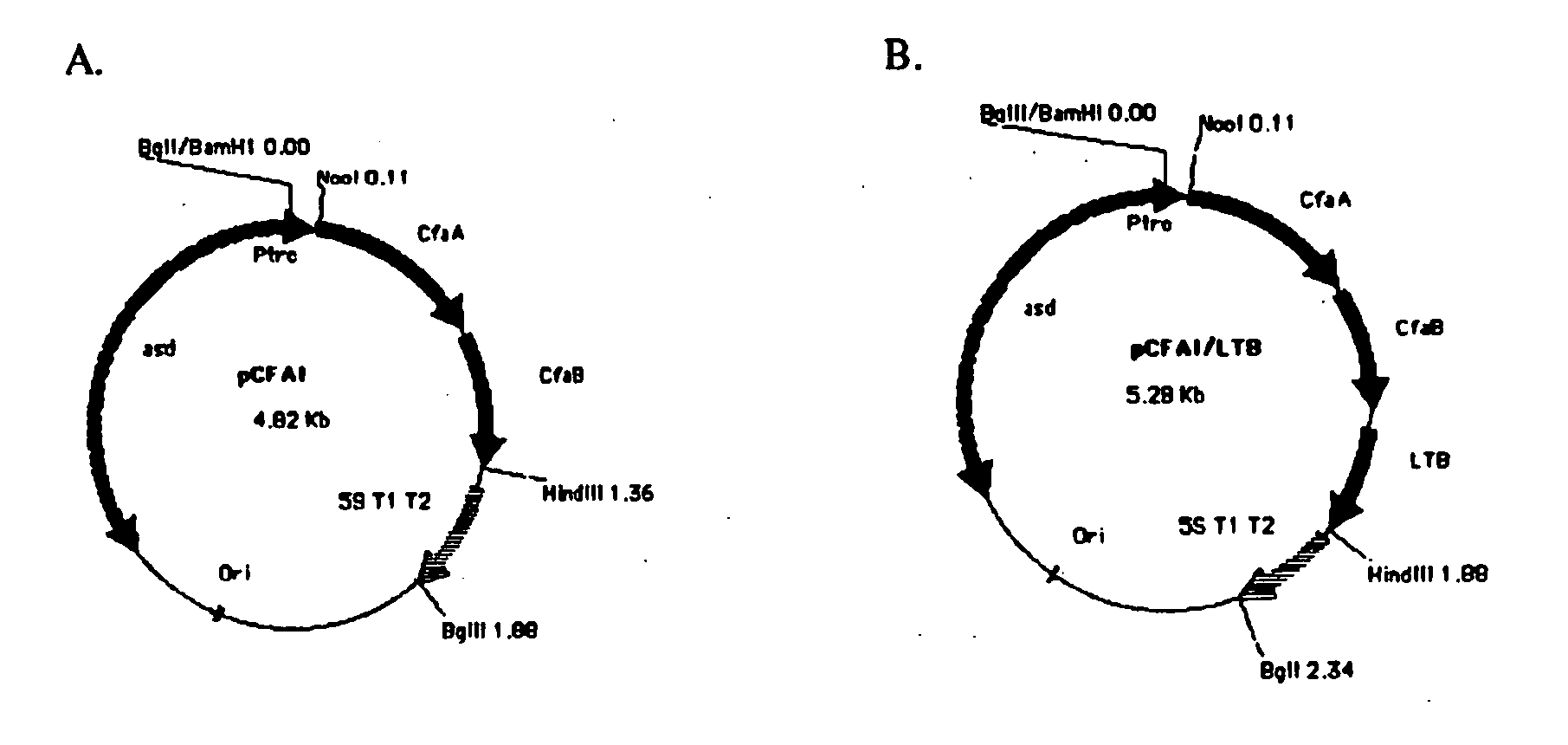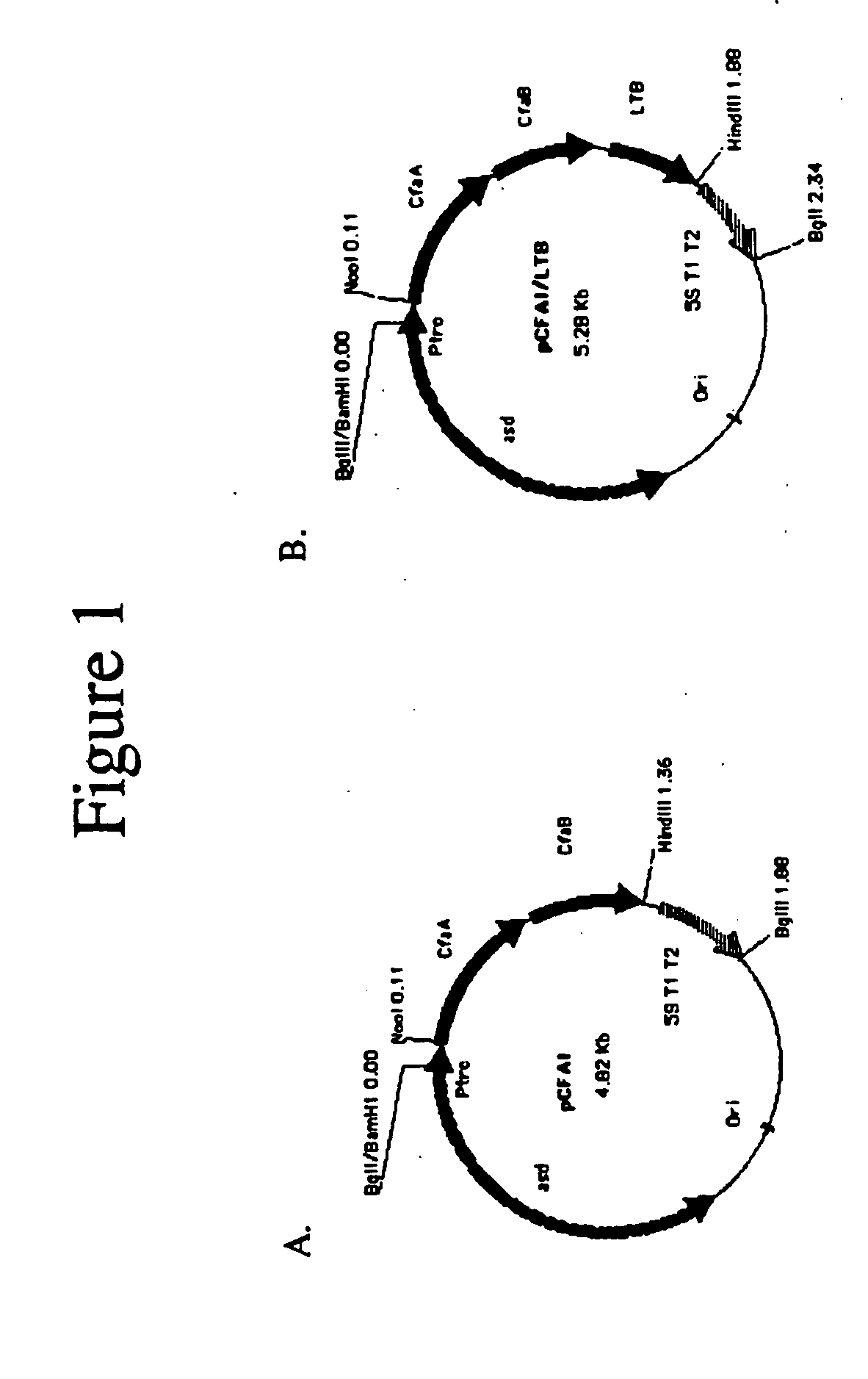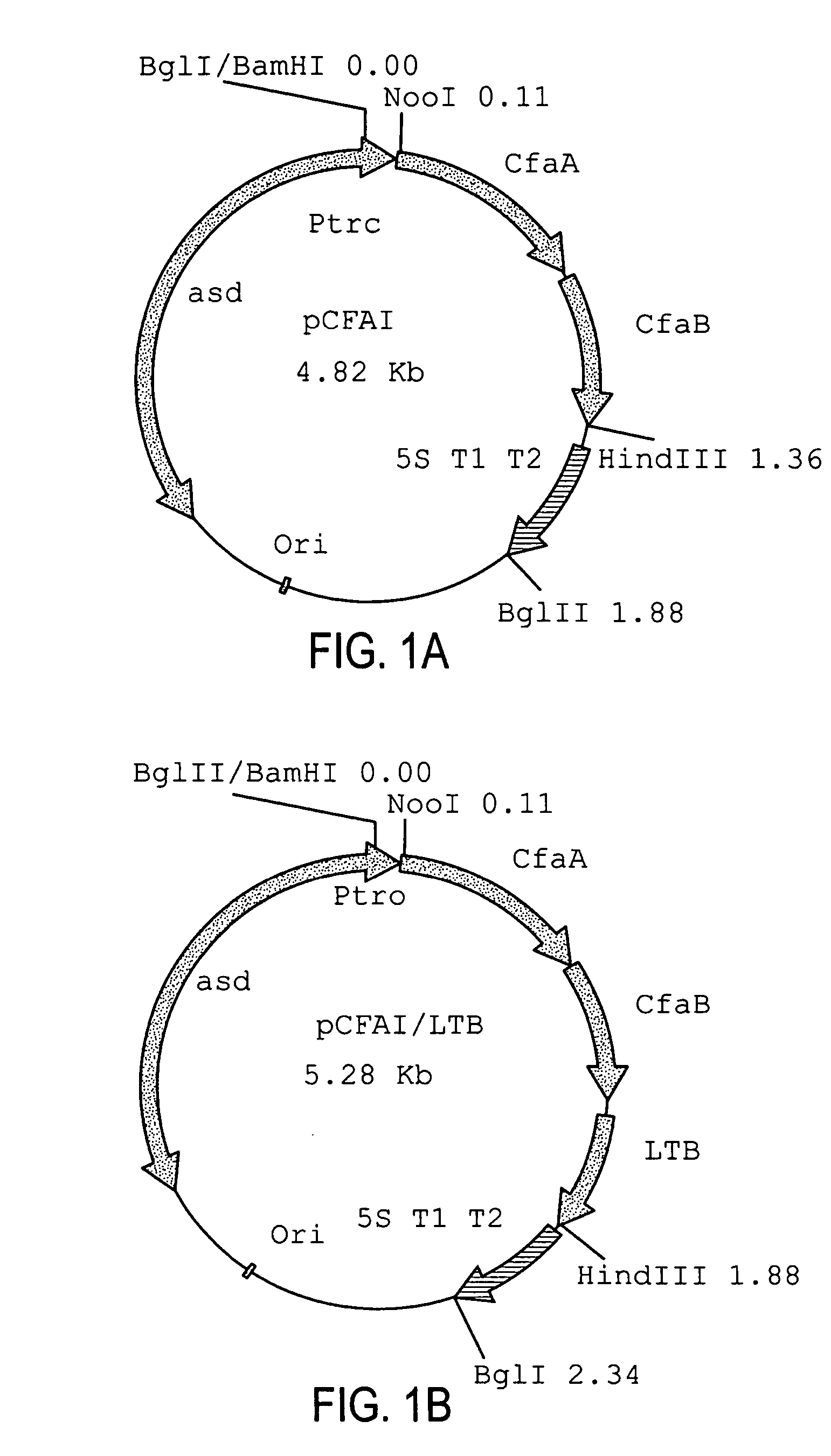Construction of live attenuated Shigella vaccine strains that express CFA/I antigens (cfaB and CfaE) and the B subunit of heat-labile enterotoxin (LTB) from enterotoxigenic E.coli
a technology of shigella and cfae, which is applied in the field of vector constructs, can solve the problems of high morbidity and mortality, insufficient prevention and treatment measures, and achieve the effect of reducing strain invasiveness
- Summary
- Abstract
- Description
- Claims
- Application Information
AI Technical Summary
Benefits of technology
Problems solved by technology
Method used
Image
Examples
example 1
Plasmid Construction
[0039] The recombinant plasmid used for CfaB expression was constructed in a single step. PCR primers (CFA1-2,5′ GATCAAGCTTCCATGAAAAAGGAGGGATGTA and CFA-9, 5′ GATCCCATGGGCATGCATAAATTATTCTATTTACTAAGT) were used to amplify the cfaA and cfaB genes from genomic DNA of the CFA / I producing strain of enterotoxigenic E. coli (ETEC) H 10407. The PCR product was digested with NcoI and HindIII and purified (Qiagen). The pYA3098 plasmid (gift Roy Curtiss III) was also digested using the same enzymes and purified (Qiagen). The fragments were ligated using T4 DNA ligase (NEB) and transformed into SC608 colonies were selected for on LB agar plates. Colonies containing the proper recombinant were verified by restriction digestion.
[0040] The recombinant plasmid used for CfaE expression was constructed in two steps. A DNA fragment containing the cfaA gene including the signal sequence, was amplified from ETEC strain H10407 genomic DNA using the PCR primers (5′-TACATGCCATGGATAAAT...
example 2
Protein Expression and Colony Blots
[0042]Shigella strains were grown to late log phase OD600 1.0-1.5 harvested by centrifugation in a Sorvall S6 4000 rpm for 7 min at 4° C. Bacterial pellets were resuspended in IX NuPage loading buffer (Invitrogen) and stored at −20 C. Lysates were prepared by sonicating pellets three separate times followed by boiling for 5 min. Protein samples were loaded on a 4-12% NuPage Bis-Tris Gel (Invitrogen) and electrophoresed for 1 hour at 180 V. Controls proteins, including purified E. coli derived heat-labile toxin (HLT) (Swiss Serum and Vaccine Institute, Berne Switerland) and purified CFA / I fimbriae (gift from Fred Cassels), were diluted to 50 and 200 ng / μl respectively and 5 μl was loaded along with bacterial lysates on a 4-12% NuPage Bis-Tris Gel. Gels were either stained with Coomassie Blue R-250 to check protein levels or were transferred to nitrocellulose membranes for western blot analysis. Blots were blocked in 2% casein (3.5 g / L NaCl, 0.58 g / ...
example 3
[0044] HeLa gentamicin protection assays were performed as previously described with some minor modifications (10). HeLa cell (ATCC CCL-2) monolayers were grown semiconfluent in 75 cm2 flasks in MEM complete (cMEM) containing 10% FBS, 2 mM L-glutamine, penicillin and streptomycin (180 μg / ml for both). One flask was trypsinized using 0.25% trypsin (Gibco) and the concentration of cells adjusted to 2×105 cells / ml in cMEM. 24-well plates were seeded with 2 mls HeLa cells and grown overnight at 37° C., 5% CO2 to an approximate confluency of 90%. HeLa cells were washed and fresh cMEM was put on 2 hrs before the addition of bacteria. Log-phase cultures of bacteria (grown in LB) were added at an estimated multiplicity of infection of 10. After the addition of bacteria the 24-well plates were centrifuged in a Sorvall swinging bucket rotor at 3000 rpm for 10 min at 25° C. Plates were incubated at 37° C., 5% CO2 for 1.5 hours. 24-well plates were washed three times w...
PUM
| Property | Measurement | Unit |
|---|---|---|
| elongation | aaaaa | aaaaa |
| length | aaaaa | aaaaa |
| width | aaaaa | aaaaa |
Abstract
Description
Claims
Application Information
 Login to View More
Login to View More - R&D
- Intellectual Property
- Life Sciences
- Materials
- Tech Scout
- Unparalleled Data Quality
- Higher Quality Content
- 60% Fewer Hallucinations
Browse by: Latest US Patents, China's latest patents, Technical Efficacy Thesaurus, Application Domain, Technology Topic, Popular Technical Reports.
© 2025 PatSnap. All rights reserved.Legal|Privacy policy|Modern Slavery Act Transparency Statement|Sitemap|About US| Contact US: help@patsnap.com



